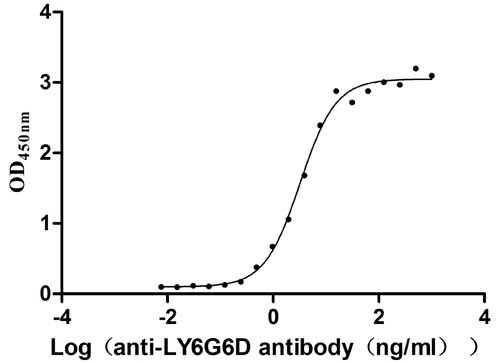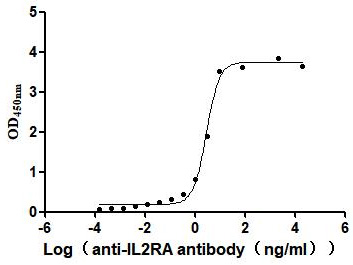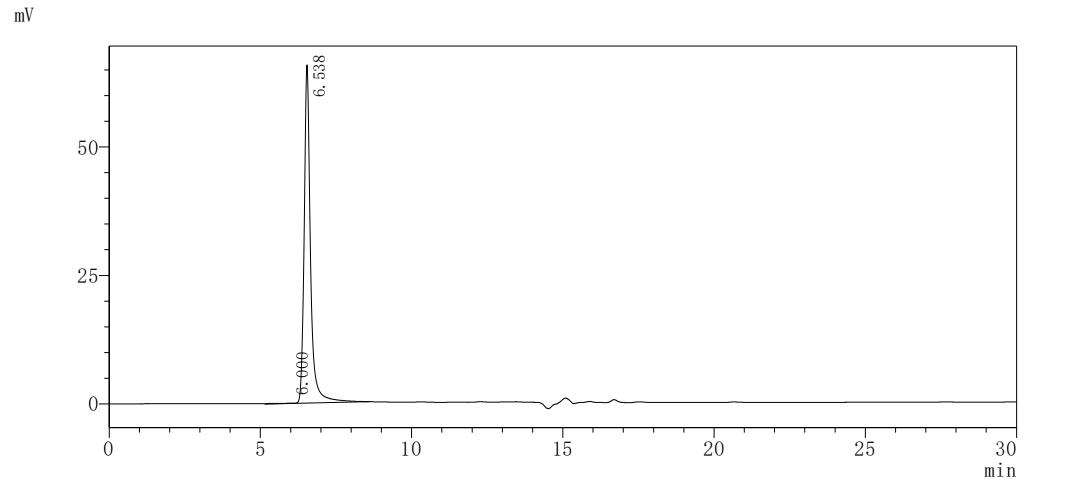Recombinant Arabidopsis thaliana Guard cell S-type anion channel SLAC1 (SLAC1), partial
-
中文名稱:擬南芥SLAC1重組蛋白
-
貨號:CSB-YP873244DOA
-
規(guī)格:
-
來源:Yeast
-
其他:
-
中文名稱:擬南芥SLAC1重組蛋白
-
貨號:CSB-EP873244DOA
-
規(guī)格:
-
來源:E.coli
-
其他:
-
中文名稱:擬南芥SLAC1重組蛋白
-
貨號:CSB-EP873244DOA-B
-
規(guī)格:
-
來源:E.coli
-
共軛:Avi-tag Biotinylated
E. coli biotin ligase (BirA) is highly specific in covalently attaching biotin to the 15 amino acid AviTag peptide. This recombinant protein was biotinylated in vivo by AviTag-BirA technology, which method is BriA catalyzes amide linkage between the biotin and the specific lysine of the AviTag.
-
其他:
-
中文名稱:擬南芥SLAC1重組蛋白
-
貨號:CSB-BP873244DOA
-
規(guī)格:
-
來源:Baculovirus
-
其他:
-
中文名稱:擬南芥SLAC1重組蛋白
-
貨號:CSB-MP873244DOA
-
規(guī)格:
-
來源:Mammalian cell
-
其他:
產(chǎn)品詳情
-
純度:>85% (SDS-PAGE)
-
基因名:SLAC1
-
Uniprot No.:
-
別名:SLAC1; CDI3; OZS1; RCD3; At1g12480; F5O11.23; T12C24.3; Guard cell S-type anion channel SLAC1; Protein CARBON DIOXIDE INSENSITIVE 3; Protein OZONE-SENSITIVE 1; Protein RADICAL-INDUCED CELL DEATH 3; Protein SLOW ANION CHANNEL-ASSOCIATED 1
-
種屬:Arabidopsis thaliana (Mouse-ear cress)
-
蛋白長度:Partial
-
蛋白標(biāo)簽:Tag?type?will?be?determined?during?the?manufacturing?process.
The tag type will be determined during production process. If you have specified tag type, please tell us and we will develop the specified tag preferentially. -
產(chǎn)品提供形式:Lyophilized powder
Note: We will preferentially ship the format that we have in stock, however, if you have any special requirement for the format, please remark your requirement when placing the order, we will prepare according to your demand. -
復(fù)溶:We recommend that this vial be briefly centrifuged prior to opening to bring the contents to the bottom. Please reconstitute protein in deionized sterile water to a concentration of 0.1-1.0 mg/mL.We recommend to add 5-50% of glycerol (final concentration) and aliquot for long-term storage at -20℃/-80℃. Our default final concentration of glycerol is 50%. Customers could use it as reference.
-
儲存條件:Store at -20°C/-80°C upon receipt, aliquoting is necessary for mutiple use. Avoid repeated freeze-thaw cycles.
-
保質(zhì)期:The shelf life is related to many factors, storage state, buffer ingredients, storage temperature and the stability of the protein itself.
Generally, the shelf life of liquid form is 6 months at -20°C/-80°C. The shelf life of lyophilized form is 12 months at -20°C/-80°C. -
貨期:Delivery time may differ from different purchasing way or location, please kindly consult your local distributors for specific delivery time.Note: All of our proteins are default shipped with normal blue ice packs, if you request to ship with dry ice, please communicate with us in advance and extra fees will be charged.
-
注意事項:Repeated freezing and thawing is not recommended. Store working aliquots at 4°C for up to one week.
-
Datasheet :Please contact us to get it.
靶點詳情
-
功能:Slow, weak voltage-dependent S-type anion efflux channel involved in maintenance of anion homeostasis. Cl(-) efflux through SLAC1 causes membrane depolarization, which activates outward-rectifying K1 channels, leading to KCl and water efflux to reduce turgor further and cause stomatal closure, that reduces water loss and promotes leaf turgor. Essential for stomatal closure in response to CO(2), abscisic acid (ABA), ozone O(3), light/dark transitions, humidity change, calcium ions, hydrogen peroxide H(2)O(2), reactive oxygen species (ROS), and nitric oxide. Binds to the highly selective inward-rectifying potassium channels KAT1 and AKT2, and inhibits their actvities. Functions as an essential negative regulator of inward potassium channels in guard cells. Essential for the efficient stomatal closure and opening in guard cells. Involved in the local and/or systemic stomatal responses (e.g. stomatal closure) to light stress.
-
基因功能參考文獻:
- Surveying in the locus, we extrapolated that the SLAC1 gene, which is associated with stomatal closure, was likely responsible for the difference of drought tolerance. PMID: 25695335
- SLAC1 is required for rapid stomatal closure in response to ozone, reduced air humidity and darkness. PMID: 23703845
- The predictive power of a systems dynamic model in Arabidopsis, is demonstrated to explain the paradoxical suppression of channels that facilitate K(+) uptake, slowing stomatal opening, by mutation of the SLAC1 anion channel. PMID: 23090586
- Guard cells with mutations in slac1 exhibit dramatically reduced inwardly-rectifying K+ channel currents. Decreasing the cytosolic Ca2+ concentration rapidly restores K+ channel currents in slac1 guard cells. PMID: 23126621
- Data suggest that SLAC1 may be a pathway providing CO(2) for photosynthesis in the guard cells. PMID: 21931667
- Guard cell anion channel SLAC1 is regulated by CDPK protein kinases with distinct Ca2+ affinities. PMID: 20385816
- SLAC1 represents the slow, deactivating, weak voltage-dependent anion channel of guard cells controlled by phosphorylation/dephosphorylation PMID: 19955405
- These study results suggested that OZS1 helps to close stomata, being not involved in the responses to light, abscisic acid, high concentrations of carbon dioxide and ozone. PMID: 18084014
- The loss-of-function mutation in SLAC1 was accompanied by an over-accumulation of the osmoregulatory anions in guard cell protoplasts PMID: 18305482
- The plasma membrane protein SLAC1 is essential for stomatal closure in response to CO2, abscisic acid, ozone, light/dark transitions, humidity change, calcium ions, hydrogen peroxide and nitric oxide PMID: 18305484
顯示更多
收起更多
-
亞細胞定位:Cell membrane; Multi-pass membrane protein.
-
蛋白家族:SLAC1 S-type anion channel family
-
組織特異性:Preferentially expressed in guard cells. Also detected in the vascular strands close to the leaf margins.
-
數(shù)據(jù)庫鏈接:
Most popular with customers
-
Recombinant Human Tumor necrosis factor ligand superfamily member 8 (TNFSF8), partial (Active)
Express system: Mammalian cell
Species: Homo sapiens (Human)
-
Recombinant Mouse GDNF family receptor alpha-like (Gfral), partial (Active)
Express system: Mammalian cell
Species: Mus musculus (Mouse)
-
Recombinant Human Claudin-18.2 (CLDN18.2)-VLPs (Active)
Express system: Mammalian cell
Species: Homo sapiens (Human)
-
Recombinant Human Lymphocyte antigen 6 complex locus protein G6d (LY6G6D) (Active)
Express system: Yeast
Species: Homo sapiens (Human)
-
Recombinant Human Interleukin-2 receptor subunit alpha (IL2RA), partial (Active)
Express system: Mammalian cell
Species: Homo sapiens (Human)
-
Recombinant Human C-C chemokine receptor type 9 (CCR9)-VLPs (Active)
Express system: Mammalian cell
Species: Homo sapiens (Human)


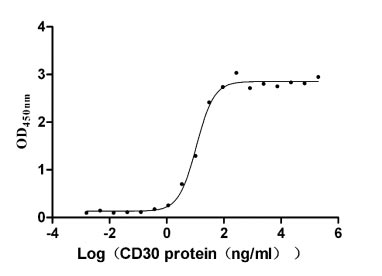
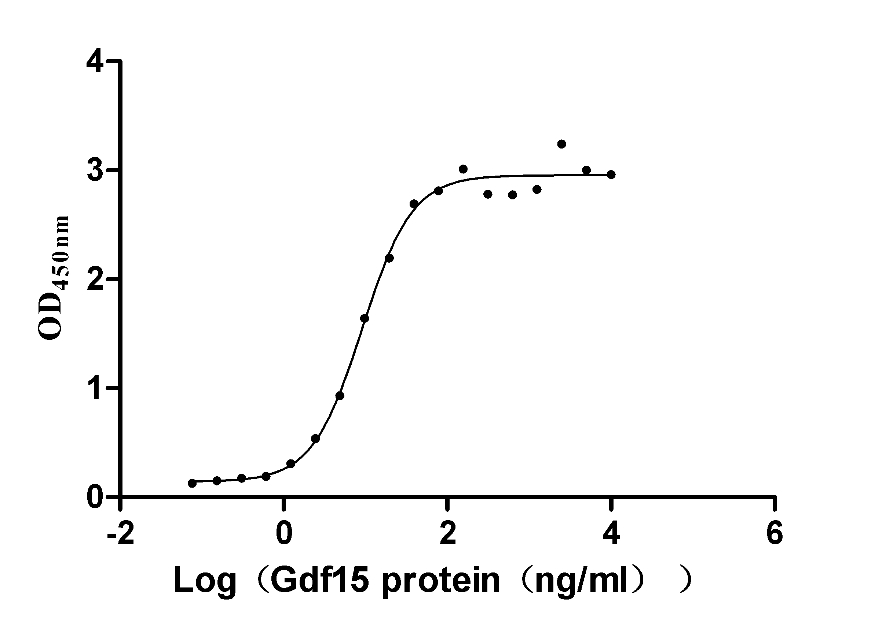
-AC1.jpg)
